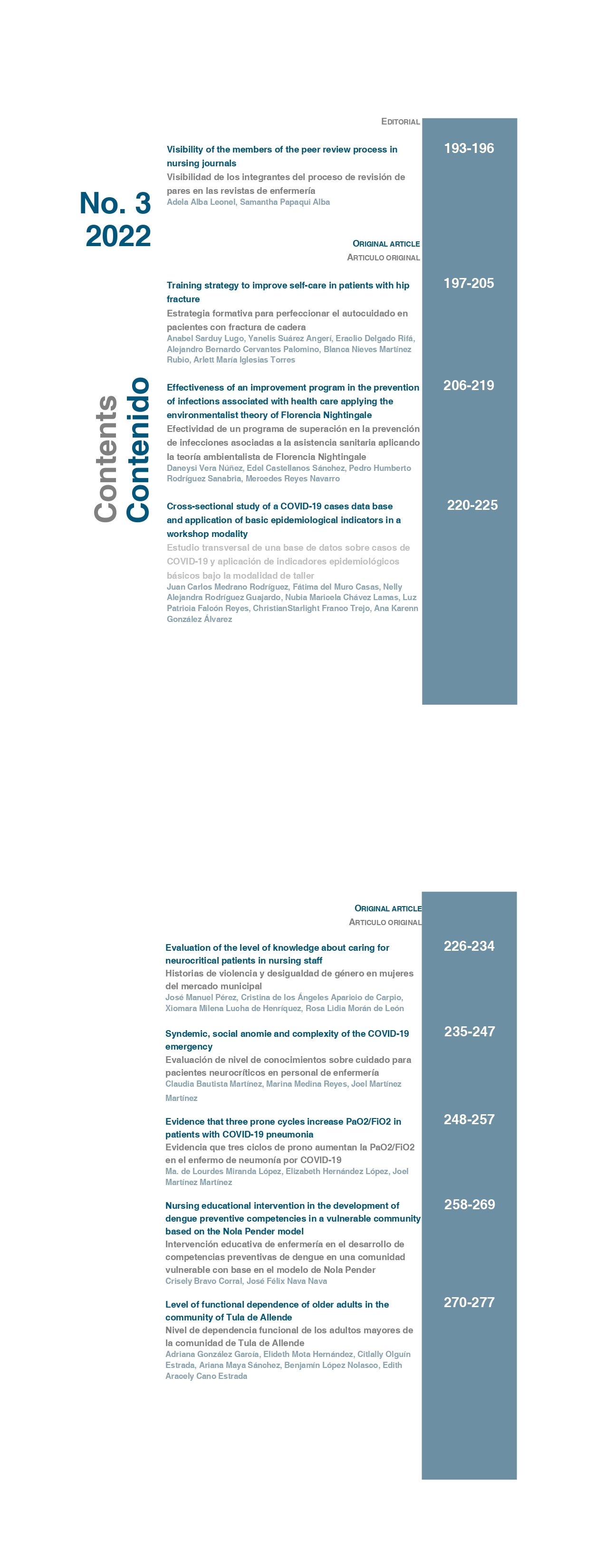Cross-sectional study of a COVID-19 cases data base and application of basic epidemiological indicators in a workshop modality
DOI:
https://doi.org/10.51422/ren.v21i3.385Keywords:
Database, COVID-19, Epidemiological indicatorsAbstract
Introduction: The COVID-19 pandemic has evidenced the importance of epidemiological methodology, so it is significant to strengthen its learning at all educational levels in the area of health sciences. Objetive. Apply descriptive and analytical epidemiological methodology for the study of a database of COVID-19 cases in the Mexican Republic.
Material and methods: A search of databases on official websites on COVID-19 cases was carried out, and an Excel format file was recovered with the information of 65,536 cases as of April 10, 2021 at 01:14 a.m. Subsequently, a statistical analysis of the different variables was carried out using the SPSS program, version 21 in Spanish, consisting of calculation of prevalence, ratio of cross products (RPC) and measures of association, in which fourth semester nursing students participated.
Results: The prevalence for the male gender was 53%, and for the female 47%, with an arithmetic mean age of 35 years. The Chi square between gender and positive laboratory result was 6527.9, with a 99% probability of an association between the variables. Likewise, for the relationship between hypertension and a positive laboratory result, the Chi square was 51.97. The RPC for diabetes and positive laboratory result was 1.4.
Conclusions: The application of basic epidemiological indicators represents an important tool for the epidemiological phenomenon COVID-19, since it establishes a characterization of the epidemic in our country.
Downloads
References
Escudero X, Guarner J, Galindo-Fraga A, Escudero-Salamanca M, Alcocer-Gamba MA, Del Río C. La pandemia de coronavirus SARS-cov-2 (COVID-19): Situación actual e implicaciones para México. Arch Cardiol Mex. 2020; 90 (Supl. 1): 7-14. https://cutt.ly/B712x3Y DOI: https://doi.org/10.24875/ACM.M20000064
Aguilar Rebolledo F, Juárez Ocaña SJ, Mejía Aranguré JM, Zanabria Salcedo MA. Conceptos básicos de epidemiología y estadística. Apreciación de un neurólogo. Rev Med Inst Mex Seguro Soc. 2003; 41(5): 419-27. https://cutt.ly/F712Hh1
Pamplona F. La pandemia de COVID-19 en México y la otra epidemia. Espiral (Guadalaj.). 2020; 27(78-79): 265-302. https://cutt.ly/G719sg8 DOI: https://doi.org/10.32870/eees.v28i78-79.7208
Martínez Calvo S, Ramis Andalia RM. El método clínico. El método epidemiológico y la Epidemiología Clínica. Rev Cubana Salud Pública. 2012; 38(4): 615-21. https://cutt.ly/d719bMK DOI: https://doi.org/10.1590/S0864-34662012000400012
Armijo Rojas R. Epidemiología. T. 1: Epidemiología básica. Buenos Aires: Intermédica Editorial, 1978.
Carvajal García-Pando A (coord.). Farmacoepidemiología. Valladolid. Universidad de Valladolid, 1993.
Herrera Comoglio R, Alesso L (eds.). Farmacovigilancia: hacia una mayor seguridad en el uso de medicamentos. Córdoba (Arg): Raquel Herrera Comoglio Ediciones, 2012.
Downloads
Published
How to Cite
Issue
Section
License
Copyright (c) 2023 Revista de Enfermería Neurológica

This work is licensed under a Creative Commons Attribution-NonCommercial 4.0 International License.






